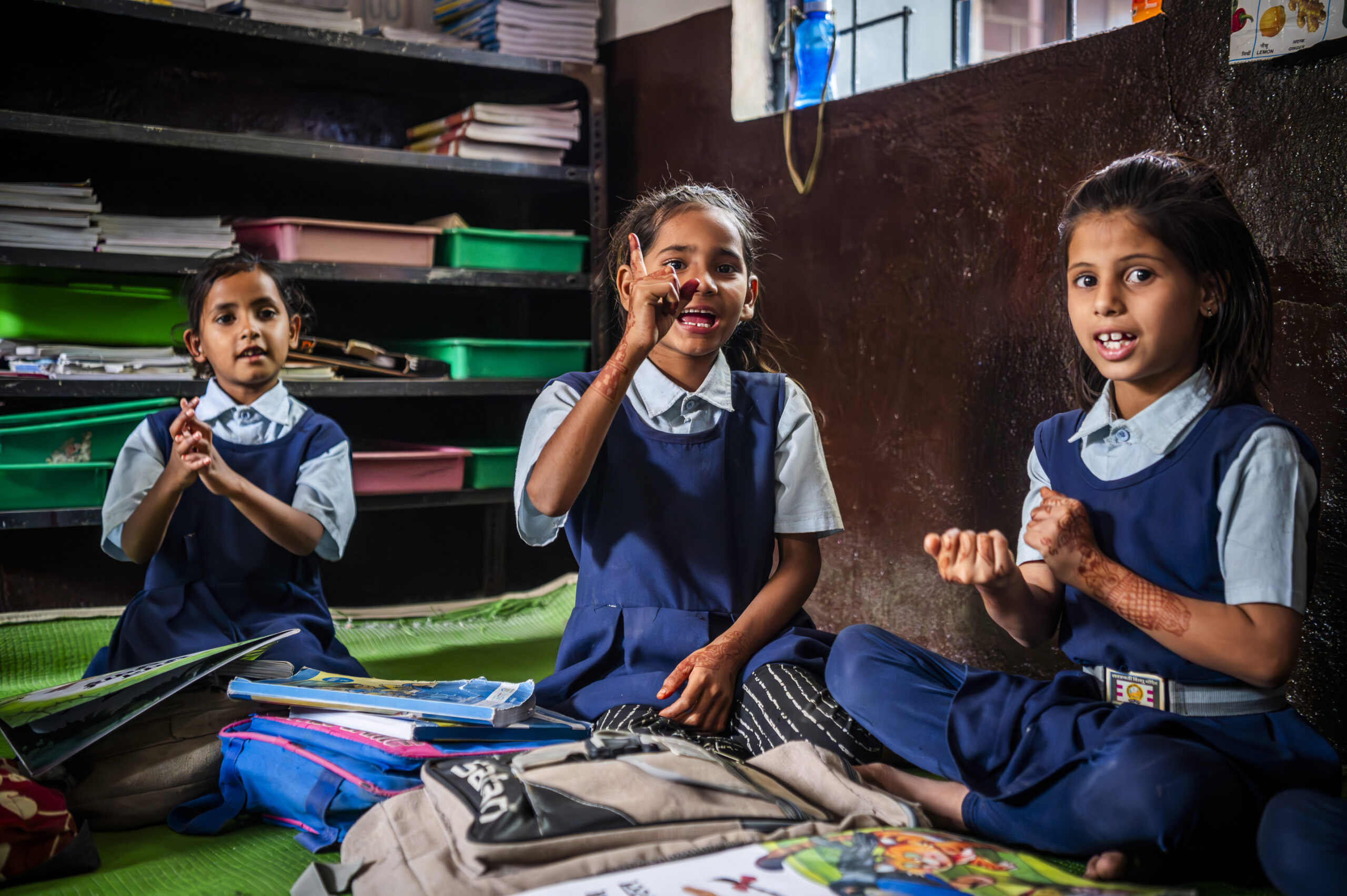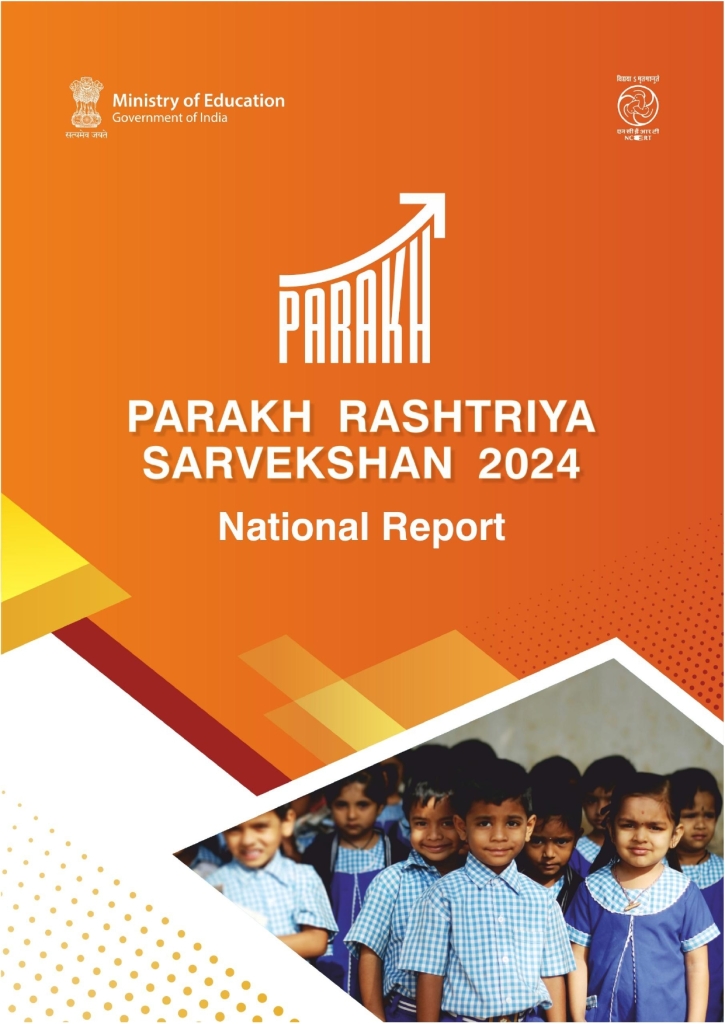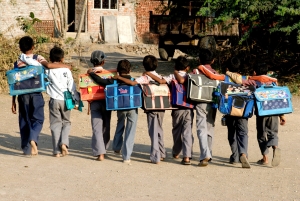India’s school education system has long struggled with a fundamental contradiction. While student enrolment and school infrastructure have expanded over the years, the achievement of learning outcomes has remained a challenge. As a successor to the National Achievement Survey (NAS), Parakh Rashtriya Sarveksahn (PRS) has transitioned from a one-time measurement exercise to a strategic diagnostic tool that evaluates whether India’s education system is enabling learning at scale. The PRS 2024, India’s newly redesigned system-level assessment, emerges as one of the responses to tackling the challenge of learning at scale.
PRS 2024 is India’s most comprehensive systemic learning check, covering 21 lakh students across 74,000 schools and 781 districts and 36 states and Union Territories (UTs). But its true significance lies not in its scale, but in its purpose — shifting the lens from student scores to system performance. PRS assesses whether governance, design and delivery mechanisms are enabling equitable learning, not just reporting outcomes at the state-level, district and block/cluster level.
Unlike classroom tests, PRS offers a diagnostic view of how key competencies are progressing and where systems are falling short, providing states and districts with a roadmap for reform, not a report card.
At the national level, the findings at the Foundational Stage are cautiously optimistic. Grade 3 students scored an average of 64% in Language and 60% in Mathematics — a reflection of progress, particularly in states where the NIPUN Bharat Mission has been implemented effectively. Seven of the 13 states where Central Square Foundation (CSF) works, either directly or through partners, outperformed the national average in both subjects. These include Himachal Pradesh, Maharashtra, Odisha, Punjab, Madhya Pradesh (MP), Uttar Pradesh (UP) and Rajasthan. On the other hand, states such as Assam, Bihar, Gujarat, Tamil Nadu, Telangana and Haryana fell below the national average, indicating the need for more targeted support and policy recalibration in classroom reforms.
PARAKH 2024 also highlights several emerging trends, including:
- Subject-wise Performance
Subject-wise, language performance is relatively stronger across grades, though comprehension and application remain areas for development. Math and science outcomes, however, are deeply worrying. This gap emphasises the urgent need to extend FLN approaches beyond Grade 3 into the preparatory stage and to ensure instructional coherence across the entire schooling continuum.
2. Government vs. Private Schools
One of the most striking insights from PRS 2024 is the reduced performance gap between government and private schools. In a reversal of commonly held assumptions, students in state government schools outperformed private school peers in Language and Math in states like Maharashtra, Punjab, Tamil Nadu, Telangana, Madhya Pradesh, Uttar Pradesh, Rajasthan and Himachal Pradesh. This is a significant marker of state-led interventions translating into classroom-level gains, from improved teaching-learning materials (TLM) distribution to the deployment of structured academic mentoring. However, in states like Assam, Bihar, Odisha and Haryana, private schools still hold the advantage, pointing to persistent structural weaknesses in government systems that must be addressed.
3. Rural vs. Urban School
Even more heartening is the rural–urban divide. Contrary to expectations, rural schools performed better than urban schools in Grade 3, in most CSF states, except for Bihar, Gujarat and Haryana. This trend challenges the long-standing narrative of urban advantage and shows that well-implemented rural strategies, when backed by monitoring and support, can yield strong learning outcomes.
4. Gender
A deeper look into the data reveals heartening trends in gender parity, particularly in early grades. In nearly all CSF-supported states, girls outperformed boys in Grade 3 Language and Numeracy, except for Bihar, where girls trailed behind. In Math, states such as Gujarat, Maharashtra, Odisha and Punjab saw girls leading. This trend is a strong indicator that policy and grassroots focus on girls’ education is bearing fruit, although it also underscores the need for context-sensitive strategies in lagging states like Assam, Bihar and UP.
Inside top-performing states, the success stories are rooted in systemic coherence and sustained effort. Some prominent state-wise trends include:
- Uttar Pradesh
Uttar Pradesh has shown remarkable progress through its large-scale NIPUN Bharat rollout, training over five lakh teachers, distributing structured teacher guides and reinforcing pedagogy through assessment dashboards and TLM support. The use of block- and cluster-level resource personnel to ensure on-ground mentoring has been a critical factor.
- Punjab
Punjab presents a different yet equally effective model, built on long-term investments in early childhood education, a strong partnership between the State Council of Educational Research and Training (SCERT) and the District Institute of Education and Training(DIET) and the use of real-time classroom data for feedback and planning. The state’s commitment to alternative assessment strategies is also notable, with 97% of teachers using project work for student evaluation.
- Madhya Pradesh
Madhya Pradesh has shown marginal but steady improvement, particularly in language comprehension, driven by structured competency-based assessments, teacher training and dashboard-based progress monitoring.
Across states, a clear trend is emerging that learning improves when teacher training, classroom tools, governance systems and pedagogical coherence are aligned. Yet, the PRS data also issues a warning. Even in Grade 3, only 55–58% of students could perform basic two-digit arithmetic operations. By Grade 6, this drops dramatically with only 29% of students being able to solve fraction-based problems. By Grade 9, only 28–31% could handle tasks involving percentages or proportions. These findings expose the cumulative nature of learning loss. If foundational competencies are not mastered early, progress erodes progressively with each passing grade.
PRS 2024 also offers critical insights into teaching practices and school resourcing. Over 89–95% of teachers in top-performing states reported using self-assessment, peer learning and project-based evaluations. However, portfolio assessments remain underutilised, suggesting the need for deeper capacity-building. Similarly, while more than 75% of schools reported having adequate teaching-learning materials and access to audio-visual kits, actual student usage of technology for learning remains low, even in states like Punjab and Himachal Pradesh, where infrastructure is better.
The Big Picture
PRS 2024 signals that foundational learning is both an opportunity and a vulnerability. It is an opportunity to lay the groundwork for lifelong learning and equitable progress, but if left unattended, it becomes a learning vulnerability that compounds across years and grades, making recovery exponentially harder.
PRS 2024 reaffirms the direction taken post-NAS 2021. Many states have built three-tiered intervention strategies. In the short term, states like UP and MP launched learning recovery programmes such as NIPUN UP and Mission Ankur, deploying daily worksheets and teacher-led remediation. In the medium term, states integrated NAS priorities into district education plans, built capacity through in-service teacher training and rolled out Common Assessment Frameworks. For the long term, structural reforms such as school consolidation, digital dashboards and governance redesign have begun to reshape systemic infrastructure.
For CSF, the implications are clear. Every state is to develop a multilevel learning improvement plan at different levels. This means district-level diagnostics, alignment of district-level intervention plans to insights and continuous progress monitoring. Special focus must be placed on strengthening FLN in Math, where conceptual learning continues to falter. Perhaps, most critically, the districts must embrace effective communication strategies — sharing PRS data not as a fault-finding tool, but as a rallying point for reform and accountability.
PRS 2024 is not a test result; it is a strategic compass.
PRS make it clear that ensuring every child learning depends on how well every part of the system functions- from teachers in classrooms to governance. While NIPUN Bharat has laid a strong foundation, the next innings must go further for five years, expanding the scope to Grades 3-5. It’s time to deepen the mission with sharper data usage, inclusive strategies and a renewed commitment to foundational learning.




